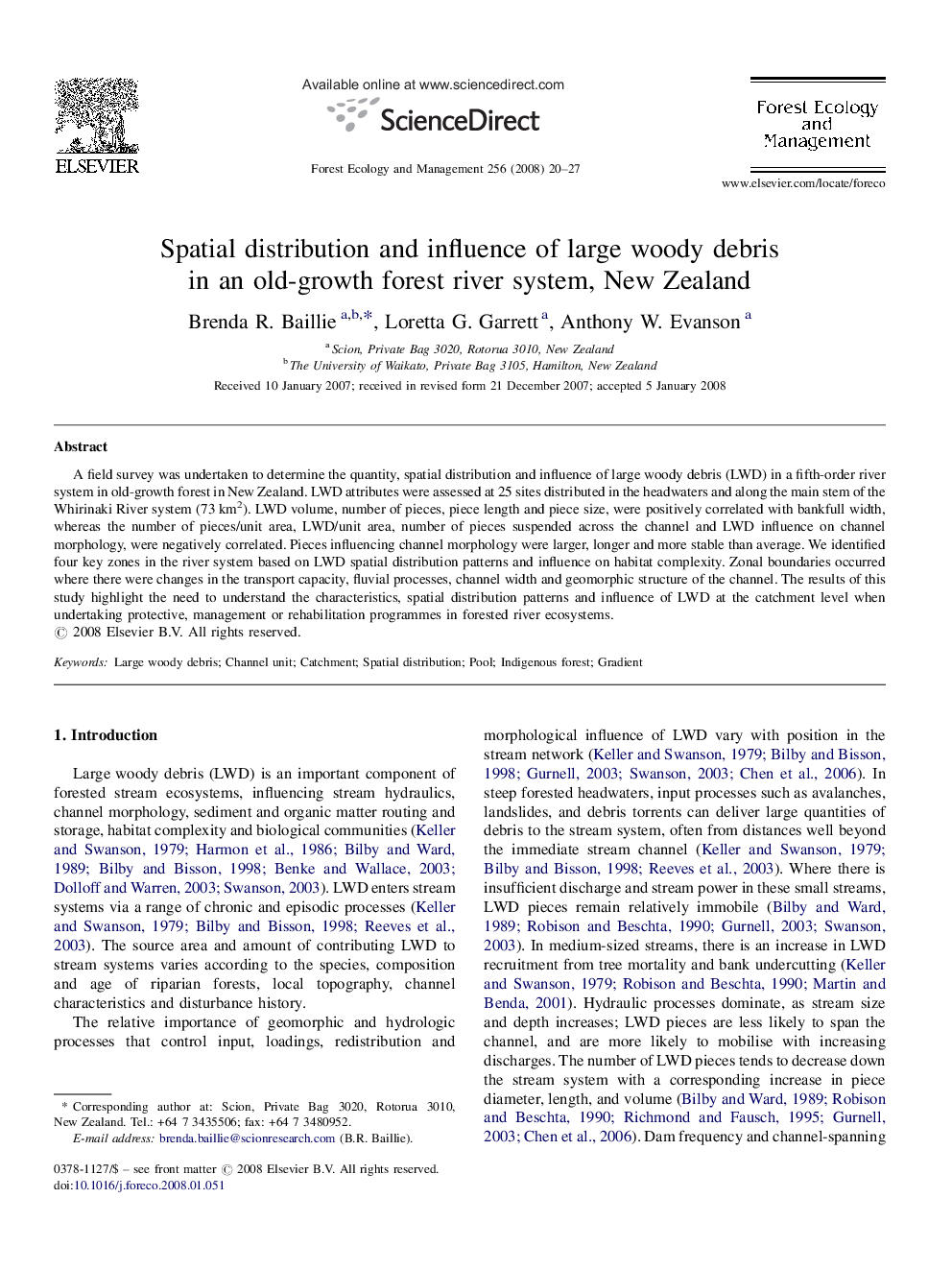| Article ID | Journal | Published Year | Pages | File Type |
|---|---|---|---|---|
| 89606 | Forest Ecology and Management | 2008 | 8 Pages |
A field survey was undertaken to determine the quantity, spatial distribution and influence of large woody debris (LWD) in a fifth-order river system in old-growth forest in New Zealand. LWD attributes were assessed at 25 sites distributed in the headwaters and along the main stem of the Whirinaki River system (73 km2). LWD volume, number of pieces, piece length and piece size, were positively correlated with bankfull width, whereas the number of pieces/unit area, LWD/unit area, number of pieces suspended across the channel and LWD influence on channel morphology, were negatively correlated. Pieces influencing channel morphology were larger, longer and more stable than average. We identified four key zones in the river system based on LWD spatial distribution patterns and influence on habitat complexity. Zonal boundaries occurred where there were changes in the transport capacity, fluvial processes, channel width and geomorphic structure of the channel. The results of this study highlight the need to understand the characteristics, spatial distribution patterns and influence of LWD at the catchment level when undertaking protective, management or rehabilitation programmes in forested river ecosystems.
